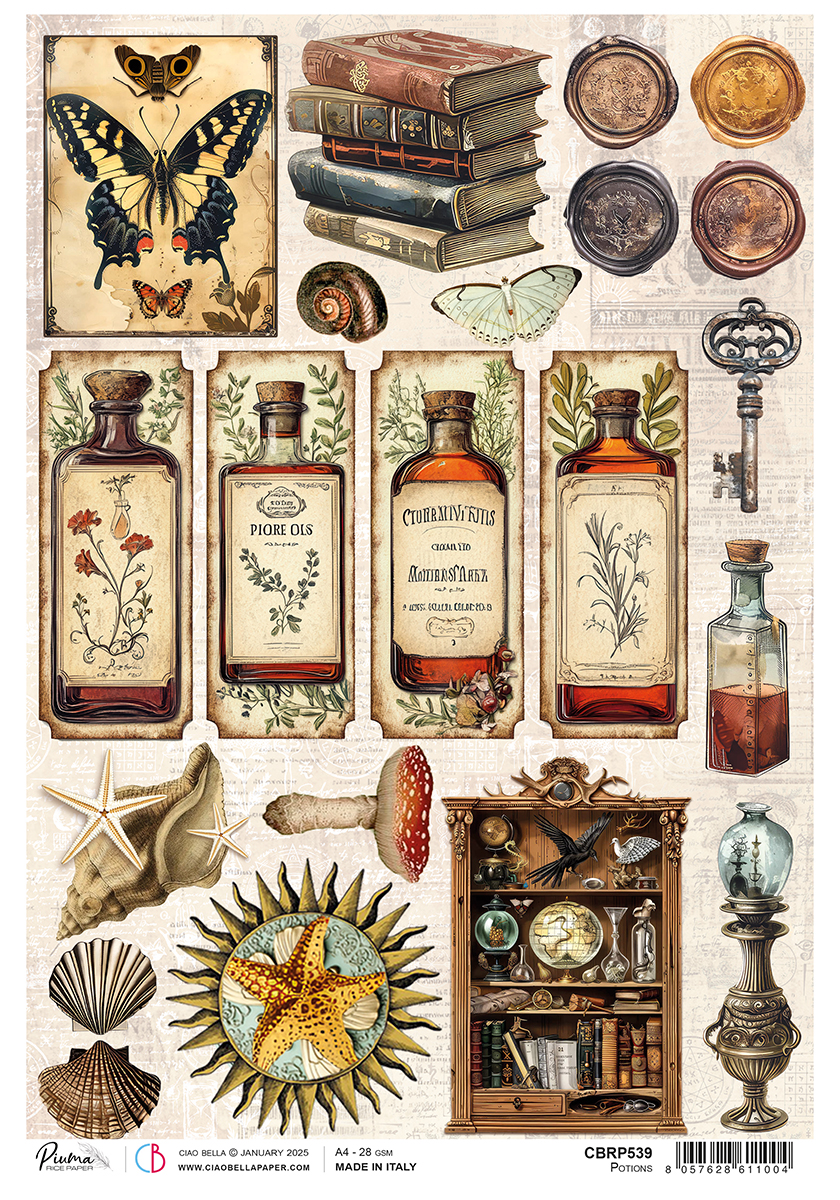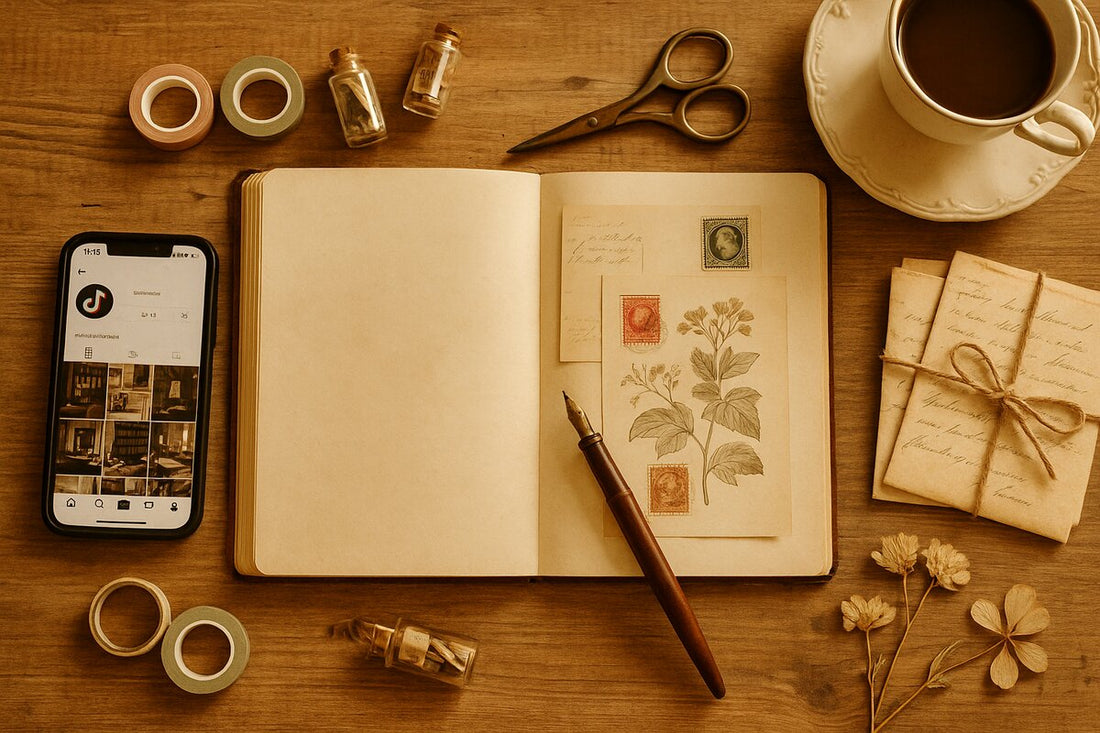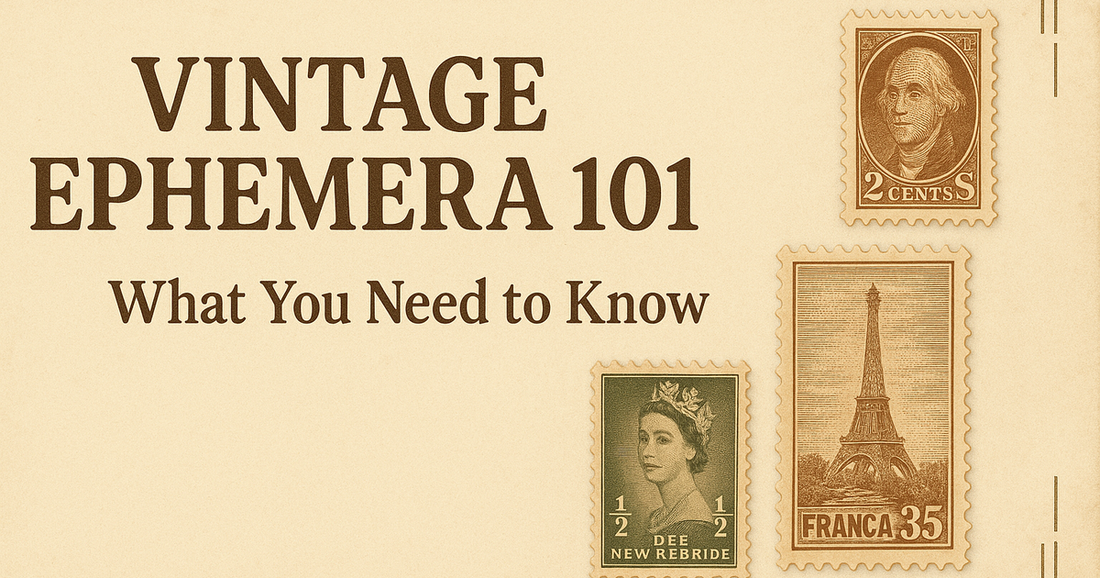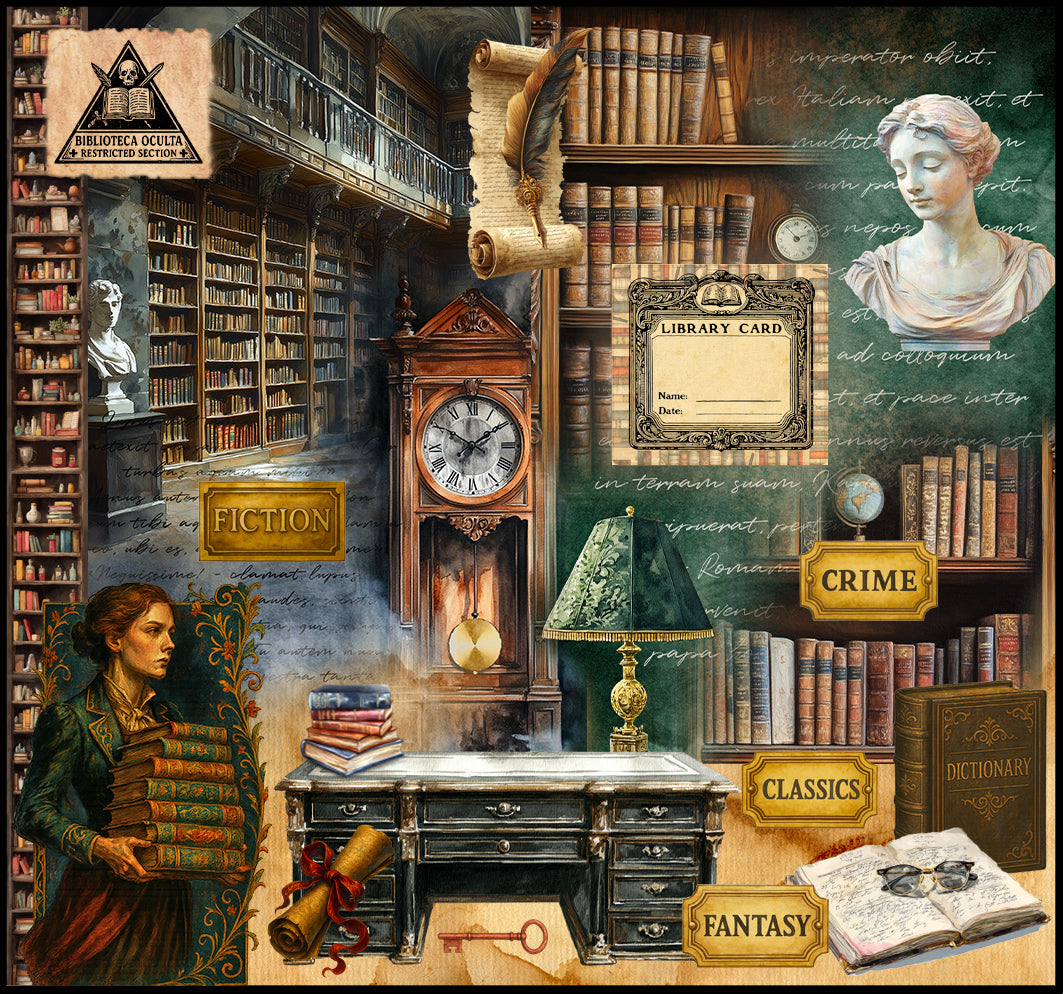Junk journaling has exploded in popularity, offering a creative, therapeutic, and budget-friendly way to document life, express yourself, and create something uniquely beautiful from "junk." If you've seen gorgeous junk journal spreads on Instagram or YouTube and thought "I could never do that," this guide will prove you wrong.
What Is Junk Journaling?
Junk journaling is a creative journaling technique that incorporates "junk"—ephemera, scraps, found papers, and everyday items—into a journal or scrapbook. Unlike traditional journals with pristine pages, junk journals embrace:
- Texture and layers built with paper scraps, fabric, and embellishments
- Mixed media elements like painting, stamping, and collage
- Imperfection and authenticity over polished perfection
- Upcycling and sustainability using items that might otherwise be discarded
- Personal storytelling through visual and written documentation
Think of it as scrapbooking's artsy, rebellious cousin who doesn't follow rules and creates from the heart.
Why Junk Journaling Is Trending in 2025
1. Sustainable Creativity
In our eco-conscious era, upcycling "junk" into beautiful journals aligns perfectly with sustainable living values.
2. Digital Detox
Junk journaling offers hands-on, screen-free creativity—a welcome break from constant digital connection.
3. Mental Health Benefits
The meditative process of layering, gluing, and creating provides stress relief and mindfulness.
4. Nostalgic Appeal
The vintage aesthetic popular in junk journaling taps into cottagecore, dark academia, and grandmillennial trends.
5. Accessible Art Form
No expensive art supplies or special skills required. If you can glue paper and write, you can junk journal.
6. Social Media Community
Thriving communities on Instagram, TikTok, and YouTube share inspiration, tutorials, and encouragement.
What You Need to Start Junk Journaling
Essential Supplies (Under $20)
1. A Journal Base
- Vintage book to repurpose
- Blank journal or sketchbook
- DIY journal from cardboard and paper
- Composition notebook
2. Adhesive
- Glue stick (for light papers)
- Liquid glue (for heavier items)
- Double-sided tape
- Washi tape
3. Writing Tools
- Pens (black and colored)
- Markers
- Pencils
- Gel pens
4. Scissors
- Regular scissors
- Decorative edge scissors (optional)
"Junk" to Collect (Free!)
This is where the magic happens. Start collecting:
Paper Ephemera
- Old book pages or aged-effect paper
- Magazine clippings
- Junk mail envelopes
- Receipts and tickets
- Maps and travel brochures
- Shopping bags (cut up for paper)
- Wrapping paper scraps
- Greeting cards
- Vintage-style postcards (reproductions or authentic)
- Old letters or vintage-inspired designs
Embellishments
- Ribbon from packages
- Fabric scraps
- Buttons from old clothing
- Lace from worn linens
- Dried flowers
- String and twine
- Stickers
- Stamps (postage)
- Tags from clothing
Found Objects
- Coffee-stained paper (intentionally age new paper!)
- Tea bag envelopes
- Seed packets
- Paint chips from hardware stores
- Old calendar pages
- Sheet music
- Newspaper clippings
Nice-to-Have Supplies
Once you're hooked (and you will be), consider adding:
- Vintage-style ephemera packs
- Decorative washi tape
- Rubber stamps and ink pads
- Stencils
- Acrylic paints
- Colored pencils or watercolors
- Paper punches
- Die-cut machines (advanced)
How to Start Your First Junk Journal
Step 1: Choose Your Journal
Option A: Repurpose a Vintage Book
Find an old hardcover book (thrift stores sell them for $1-3). The pages become your journal base, and the aged aesthetic is instant.
Option B: Create from Scratch
Use cardboard for covers, paper for pages, and bind with ribbon, rings, or stitching.
Option C: Transform a Blank Journal
Purchase an inexpensive blank journal and customize the cover with paper, fabric, and embellishments.
Option D: Composition Notebook
The most beginner-friendly option. Cover with decorative paper and start creating on the lined pages.
Step 2: Gather Your "Junk"
Before creating your first spread, collect papers and ephemera. Sort by:
- Color (neutrals, pastels, brights)
- Theme (travel, vintage, nature, etc.)
- Type (text papers, images, patterns)
- Size (large backgrounds, medium layers, small accents)
Step 3: Create Your First Spread
Layer 1: Background
Glue a large piece of paper (book page, map, vintage wallpaper) to cover most of the page.
Layer 2: Mid-Ground
Add medium-sized elements: postcards, photos, interesting text snippets, or envelopes.
Layer 3: Details
Top with small embellishments: washi tape borders, buttons, ribbon, small die-cuts, or postage stamps.
Layer 4: Personalization
Add journaling with pens, doodles, dates, or quotes that make the page meaningful to you.
Step 4: Don't Overthink It
The beauty of junk journaling is imperfection. Crooked elements, visible glue, and "mistakes" add character. Let go of perfectionism and enjoy the process.
Junk Journal Theme Ideas
1. Travel Journal
Use maps, tickets, postcards, and photos to document adventures. Include foreign receipts, brochures, and local ephemera.
2. Vintage Aesthetic
Create spreads with aged-effect papers, vintage-style postcards, period-inspired buttons, reproduction stamps, and sepia-toned photos.
3. Nature Journal
Incorporate pressed flowers, leaves, seed packets, botanical book pages, and nature photography.
4. Daily Life Documentation
Use receipts from favorite coffee shops, movie tickets, tags from new clothes, and everyday ephemera to capture ordinary moments.
5. Seasonal Journals
Create spreads celebrating each season with appropriate colors, themes, and found items (autumn leaves, winter paper snowflakes, spring seed packets).
6. Gratitude Journal
Combine junk journaling with gratitude practice, decorating pages where you list things you're thankful for.
7. Recipe Journal
Use vintage recipe cards, food magazine clippings, grocery lists, and product packaging to create a visual recipe book.
8. Book Lover's Journal
Incorporate pages from damaged books, bookmarks, library cards, quotes, and author photos.
9. Memory Keeping
Document specific memories with photos, tickets, and ephemera from the event, plus journaling about feelings and details.
10. Art Journal
Use junk journaling as a base for painting, drawing, and mixed media experimentation.
Junk Journaling Techniques
Basic Techniques
Layering
The foundation of junk journaling. Overlap papers and elements to create depth and interest.
Tearing
Instead of cutting, tear paper edges for a softer, more organic look.
Folding
Create interactive elements: mini envelopes, fold-out maps, tucked-in pockets.
Pockets
Glue three sides of an envelope or paper to create pockets for storing extra ephemera.
Tabs
Add strips of paper extending past page edges for easy navigation and visual interest.
Intermediate Techniques
Aging Paper
- Coffee or tea staining
- Burning edges carefully (adult supervision!)
- Crumpling and smoothing
- Ink distressing on edges
Watercolor Washes
Add soft color backgrounds with diluted watercolors or water-soluble crayons.
Stamping
Use rubber stamps and ink pads to add text, images, or patterns.
Collage Composition
Arrange elements before gluing, considering balance, focal points, and negative space.
Journaling Integration
Incorporate handwritten text naturally within your collage, not as an afterthought.
Advanced Techniques
Gesso Backgrounds
Prime pages with gesso for painting surfaces or to cover existing text.
Mixed Media Painting
Add acrylic paint, spray inks, or mists for bold color.
Transfer Techniques
Transfer images using various methods (gel medium, packing tape, acetone).
Stenciling
Create patterns with stencils and paint or texture paste.
Dimensional Elements
Add 3D items: buttons, metal charms, dried flowers, fabric roses.
Where to Find Vintage Junk Journal Supplies
Free or Nearly Free
Your Home
- Old books (damaged or unloved)
- Junk mail
- Packaging
- Magazines
- Receipts and tickets
- Fabric scraps
Thrift Stores
- Vintage books ($1-3)
- Old postcards
- Buttons by the bag
- Vintage ribbon and lace
- Damaged books for pages
Free Resources
- Nature (leaves, flowers, bark)
- Library book sale freebies
- Recycling bin treasures
- Friends' cast-offs
Curated Collections
Vintage-Style Craft Subscription Boxes
Services like CoraCreaCrafts deliver curated vintage-inspired ephemera monthly:
- Period-authentic reproduction papers
- Vintage-style embellishments
- Themed collections
- Time-saving curation
- Consistent quality
Etsy & Online Shops
Specialty shops sell vintage ephemera packs, though quality varies and can be expensive.
Estate Sales
Find boxes of vintage papers, buttons, and craft supplies at estate sales, often for bargain prices.
Common Junk Journaling Mistakes (And How to Avoid Them)
1. Waiting for Perfect Supplies
Mistake: Buying expensive supplies before starting.
Solution: Start with what you have. You'll discover preferences through creating, not shopping.
2. Fear of Ruining Pages
Mistake: Spending hours arranging without gluing, afraid to commit.
Solution: Remember it's called "junk" journaling. Imperfection is the point. Glue it down and move on.
3. Comparison Syndrome
Mistake: Seeing expert junk journal videos and feeling discouraged.
Solution: Those creators have years of practice. Your first pages won't look like theirs—and that's okay.
4. Overcrowding
Mistake: Adding too many elements until the page is chaotic.
Solution: Leave some negative space. Not every inch needs coverage.
5. Ignoring Journaling
Mistake: Creating beautiful pages without any writing or dates.
Solution: Add at least a date and brief note. Future you will appreciate the context.
6. Using Only New Supplies
Mistake: Buying "junk journal" supplies instead of using actual junk.
Solution: Embrace authenticity. Real junk has more character than manufactured ephemera.
The Therapeutic Benefits of Junk Journaling
Mindfulness Practice
The hands-on, repetitive actions of tearing, gluing, and arranging bring you into the present moment, quieting anxious thoughts.
Creative Expression
Junk journaling offers a judgment-free zone for self-expression, whether through color choices, theme selection, or journaling content.
Memory Preservation
Unlike digital photos that sit forgotten on devices, junk journals create tangible memory keepsakes you can hold and revisit.
Sustainable Hobby
Upcycling "junk" provides satisfaction from creating beauty from waste, aligning with eco-conscious values.
Accessible Art
No special skills or expensive tools required. Anyone can start today with paper and glue.
Community Connection
Sharing your junk journal online or in person connects you with a supportive, inspiring community.
Start Your Junk Journal Journey Today
You don't need special skills, expensive supplies, or artistic talent to start junk journaling. You just need curiosity, some "junk," and the willingness to create without judgment.
Ready to begin? Subscribe to CoraCreaCrafts and receive monthly curated vintage ephemera, papers, and embellishments perfect for junk journaling—no hunting required, just create!
Frequently Asked Questions
Q: Is junk journaling expensive?
A: No! It's one of the most budget-friendly crafts. You can start with free materials from your home and gradually add purchased items if desired.
Q: Do I need to be good at art?
A: Absolutely not. Junk journaling is about creativity and expression, not artistic skill. Simple gluing and arranging create beautiful pages.
Q: What if I can't draw or paint?
A: You don't have to! Many junk journalers focus purely on paper collage without any drawing or painting.
Q: How long does a junk journal page take?
A: Anywhere from 15 minutes to several hours, depending on complexity and your mood. There's no time limit.
Q: Can kids junk journal?
A: Yes! With non-toxic glues and age-appropriate scissors, kids love junk journaling. It's less precious than traditional scrapbooking, encouraging experimentation.
Q: Where do I find vintage ephemera?
A: For authentic vintage: thrift stores, estate sales, your own attic. For vintage-style reproductions: subscription boxes like CoraCreaCrafts, online shops, or craft stores with vintage-inspired collections.
Q: What's the difference between junk journaling and scrapbooking?
A: Scrapbooking typically preserves specific photos and memories with coordinated supplies. Junk journaling is more art-focused, mixed media, and uses "found" materials rather than purchased coordinated kits.








